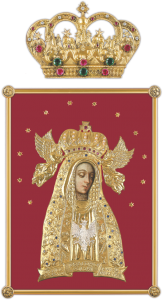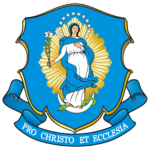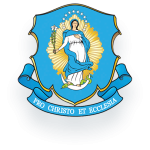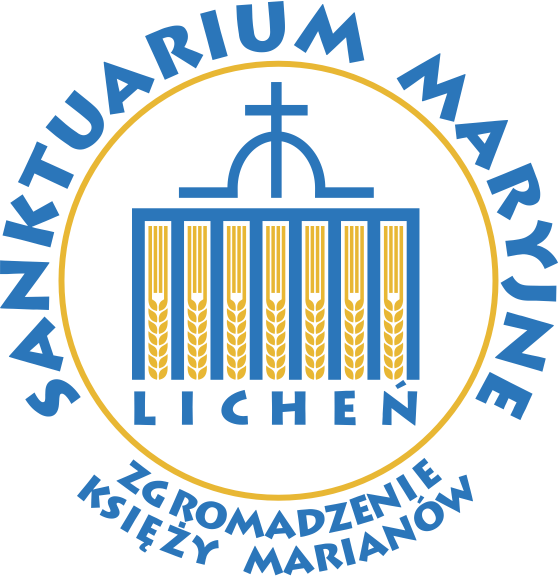Congregation of Marian Fathers and Brothers
History of the Congregation
Congregation of Marian Fathers of the Immaculate Conception of the Blessed Virgin Mary (Latin. Congregatio Clericorum Marianorum ab Immaculata Conceptione Beatissimae Virginis Mariae) swój początek ma w deklaracji złożonej przez św. Stanisława od Jezusa i Maryi Papczyńskiego w Krakowie (tzw. „Oblatio”) 11 grudnia 1670 roku. Odnowione zostało i zreformowane w 1910 roku przez bł. abp Jerzego Matulewicza. Jesteśmy pierwszym zgromadzeniem zakonnym kleryckim założonym na ziemiach polskich.
The members of our Congregation are clergy who receive the sacrament of Holy Orders and religious brothers. We are present in 19 countries around the world, with over 450 priests and brothers gathered in 80 communities. Our commitment is a variety of works: from parish work to missionary work, from service in sanctuaries to specialist pastoral work, from educational and scientific work to publishing. We do all this in accordance with our slogan: for Christ and the Church.
Wszyscy współbracia marianie, którzy złożyli śluby zakonne mają prawo używać za swoim nazwiskiem skrótu „MIC”which comes from the Latin "Mariani Immaculatae Conceptionis", which translates to "Marian of the Immaculate Conception".
Dates and events related to the history of the Congregation
December 11, 1670 - foundation of the Marians by Bl. Stanislaus Papczyński (1631-1701)
Father Stanisław Papczyński (1631-1701), born in Podegrodzie near Stary Sącz, first joined the Order of Pious Schools, commonly known as Piarists. After a dozen or so years, however, he decides to leave the order. At the moment of receiving the papal dispensation, he performs the act of "Oblatio", that is, he offers himself to the Triune God and to Mary Immaculate. He also reveals his intention to found the Marian Order.
October 24, 1673 - the first canonical approval of the Marians by Bishop Jacek Święcicki
The Marian Founder struggled with many difficulties in his life, and it was no different with the beginnings of a new order. As he began to organize a new community, there were several hermits, ex-soldiers around him, who quickly began to leave him as he made demands on common prayers and mortifications. However, with time, thanks to God's grace, the community grew stronger and slowly developed. New candidates came to proclaim the glory of the Immaculata with their own lives, pray for the dead and help parish priests in the catechesis of the common people.
Father Founder writes for his confreres a rule called "Norma vitae" containing the basic goals of the new foundation: “greater growth of God's glory and concern for one's own salvation with a serious pursuit of perfection. (...) However, in order not to stand idly in the Lord's vineyard, you must spread the honor of the Immaculate Conception of the Most Holy Virgin Mother of God according to your strength and with the utmost effort, devotion and enthusiasm, assist with prayer the souls of the faithful who died subjected to purgatory punishments, especially soldiers and those who died as a result of the plague. However, it will not be forbidden for those gifted with this kind of ability to humbly help parish priests in church work. " This is the rule adopted by the community in Puszcza Korabiewska (today's Puszcza Mariańska).
November 24, 1699 - approval of the Marian Order of the Immaculate Conception of the Blessed Virgin Mary for the Rule of the Imitation of the Ten Virtues of the Blessed Virgin Mary by Pope Innocent XII
Rozwijający się, nie bez problemów, nowy zakon otrzymuje w 1677 roku aprobatę Sejmu Rzeczpospolitej. W tym samym roku, odpowiadając na zaproszenie biskupa Stefana Wierzbowskiego, O. Stanisław otwiera placówkę mariańską w Nowej Jerozolimie (dzisiejsza Góra Kalwaria). Marianie dostają pod opiekę mały kościółek zwany „Wieczernikiem Pańskim”.
The main goal of the Founder of the Marians was to obtain papal approval, that is, final ecclesiastical approval. This longed-for moment came in 1699, two years before the death of St. Father Stanisław. When St. Stanisław, the Marians already had three monasteries (in Puszcza Mariańska, Góra Kalwaria in Marianki, where the tomb of the Founder is, and in Goźlin). However, the development of the order was held back by various trials, and even the community was somewhat dispersed.
18th / 19th century - dissolution of Marian monasteries in Rome, Portugal and in the former Republic of Poland
The Venerable Servant of God, Fr. Kazimierz of St. Józef Wyszyński. Thanks to his decisions, new institutions were established in Poland and Lithuania, also abroad in Portugal and Rome. In the 18th century, the Marians were then recruited from various nationalities, especially Poles, Lithuanians, Ruthenians, Czechs and Portuguese. The development of the order was hampered by the third partition of Poland. The Marians struggled with many difficulties, most of the schools they ran were liquidated, some monasteries in Poland, but most of all in Rome and Portugal, were closed. After 1864, only one monastery remained - in Marijampole, Lithuania. All the others were canceled for the participation of the monks in the January Uprising.
August 29, 1909 - Fr. Jerzy Matulewicz (1871-1927) secretly vows in the presence of the last living Marian, Father Wincenty Sękowski
In 1908, only one Marian remained alive in the Mariampole monastery - Father General Wincenty Sękowski himself. However, God did not allow the law to die. He allowed the saving and restoration of the congregation, which was accomplished through the intercession of Bl. Father Jerzy Matulewicz. On November 28, 1910, Pope Pius X approves the renewed Constitutions; in this way the Marians are transformed into a clerical religious congregation with an apostolic character. When Fr. General Sękowski died in 1911, the congregation had three new members and its legal existence was secured. Divine Providence, always venerated in the Marian community, once again showed evidence of its care over it. It was the beginning of the dynamic development of the reborn community.
June 28, 1987 - beatification of Bishop Jerzy Matulewicz, Restorer of the Congregation of Marian Fathers
June 13, 1999 - beatification of the Martyrs of Rosica: Jerzy Kaszyra and Antoni Leszczewicz
September 16, 2007 - beatification of Father Stanisław Papczyński, Founder of the Congregation of Marian Fathers
June 5, 2016 - canonization of Bl. Stanisław Papczyński
Currently, Marians work in 19 countries on all continents. The Marian community has about 450 priests and brothers who serve in a variety of ways: from parish work to missionary work, from ministry in sanctuaries to specialized pastoral care, from running schools to research work at universities. They try to do it in accordance with the motto "Pro Christo et Ecclesia" (For Christ and the Church), which is so Marian in its meaning.
Founder
Despite the difficulties of moving forward - although it sounds like popular motivational phrases on social networks, it is safe to describe the life of St. Father Stanisław Papczyński, Founder of the Congregation of Marian Fathers.
Born on May 18, 1631 in Podegrodzie near Stary Sącz into a peasant family, receiving the baptism name Jan. Like every rural child of the foothill area, he begins his adolescence grazing sheep in the meadows. However, he wants to gain knowledge. Then the first difficulties in learning the alphabet come, teachers wring their hands, but after praying, suddenly he becomes a gifted child and is intellectually ahead of others. Then comes health problems, when it seemed that he was dying of an infectious disease. As not everyone was positive about the choice of the path of life, when he joins the Piarists, he meets the resistance of his family. Then he faces further difficulties with his Piarist studies, which he has to quit because of the Swedish invasion. And finally there are difficulties with the Piarists themselves, because the Order is undergoing a transformation at this time. However, he does not break down and, thanks to the awareness that God's grace is prior, he fulfills his vocation by loving the Immaculate.
W zakonie pijarów oddaje się z zapałem pracy duszpasterskiej i wychowawczo-naukowej. Staje się też cenionym kaznodzieją oraz spowiednikiem. Z jego mądrości korzysta ówczesna elita umysłowa Warszawy – z hetmanem wielkim koronnym Janem Sobieskim i nuncjuszem abp. Antonio Pignatellim, późniejszym papieżem Innocentym XII. Pomimo tego wzrasta w nim myśl założenia nowego zakonu. W roku 1671 przywdziewa biały habit na cześć Niepokalanego Poczęcia Maryi i opracowuje „Regułę życia” dla przyszłego zakonu. W 1673 powstaje pierwszy dom nowego zakonu marianów w Puszczy Mariańskiej koło Żyrardowa. Po kilku latach bł. Stanisław zakłada w Wieczerniku na Mariankach w Górze Kalwarii drugi mariański klasztor i wspólnota dzięki aktywności duszpasterskiej rozwija się dynamicznie. Sława jego świętości rozchodzi się szybko w okolicy, tak że wielkim szacunkiem darzy go nawet sam król Jan III Sobieski, który przyjmuje marianów pod swoją protekcję.
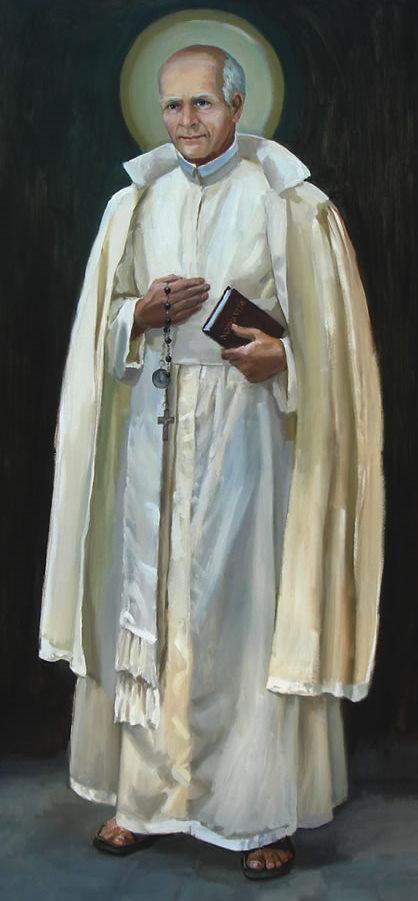
With time, however, the Founder runs out of strength and is haunted by a severe, debilitating disease. On September 17, 1701, he died in Góra Kalwaria. Before his death, he calls upon his confreres to faithfully obey the rule and to be zealous in helping the deceased. He is buried in the Church of the Lord's Supper in Góra Kalwaria. Today many believers make pilgrimages to his tomb, asking for favors through his intercession. On September 16, 2007 he is beatified. On June 5, 2016, Pope Francis canonize Father Stanisław Papczyński.
Reviver
"Here I am, take me: do with me what you want, let me be a suitable instrument in Your hands, so long as Your glory grows, Your kingdom may be expanded, Your will may be done" - the words that he wrote in his diary of Bl. Jerzy was completely fulfilled in his life. He could not have imagined that God would use him to restore the Marians.
Blessed George Matulaitis - Matulewicz was born on April 13, 1871 in Lugine near Mariampole, in the Suwałki region, as the eighth child in the family. Having lost his father and mother early, he remained under the care of his older brother. Despite his poor health, he made tremendous progress in science. From childhood, he had a desire to follow Christ on the path of the priesthood.
After graduating from high school, he entered the seminary in Kielce, then he studied at the Warsaw seminary and at the Theological Academy in St. Petersburg. In 1898 he was ordained a priest. However, his deteriorating health forced him to interrupt his pastoral work and he left for further studies in Freiburg, Switzerland, which he completed with a doctorate.
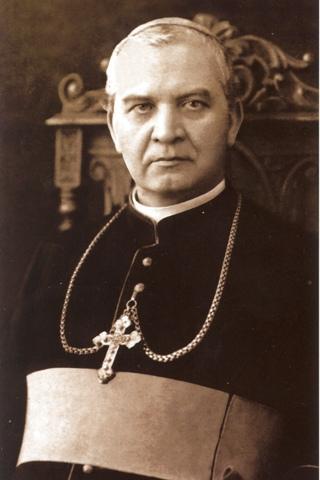
It was then that he saw the value of the consecrated life, which he wanted for himself as well. As a former Marian pupil, he deeply concerned himself with the fate of the Marian Order on the brink of collapse. There was only one Marian at that time, Father Wincenty Sękowski, the Superior General of the Order. Fr. Matulewicz decided to join the Marians and, with the consent of the Holy See, he made his religious vows in secret from the tsarist authorities. Following him, more and more candidates, attracted by his charism, join the renewed congregation. During World War I, he founded an orphanage in Bielany Warszawskie, which will become a famous gymnasium, and founded the women's congregation of the Sisters of the Poor of the Immaculate Conception of the Blessed Virgin Mary, and then another congregation - the Sisters Handmaids of Jesus in the Eucharist (Eucharist).
At a time when Fr. George devoted himself with great enthusiasm to the organization of the congregation being renewed, the pope in 1918 appointed him to the episcopal see in Vilnius. Struggling with many difficulties on the part of Poles and Lithuanians, while at the same time dealing with the matters of the congregation, in 1925 the pope - at his request - released him from the episcopal see, appointing him archbishop and apostolic visitator to Lithuania. This allowed him to live in Rome, where he moved the Generalate.
In January 1927, while in Lithuania, he fell ill with acute appendicitis. He died on January 27, 1927. He lived his life in accordance with the slogan he gave to the Marians renewed by him: Pro Christo et Ecclesia - For Christ and the Church! A solemn funeral was held in the Kaunas cathedral, and in 1934 his body was transferred to the Marian church in Marijampole. On June 28, 1987, he was beatified by Pope John Paul II.
